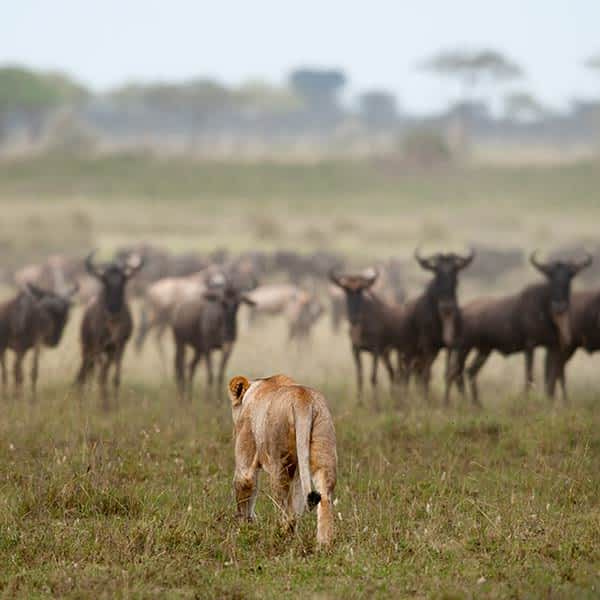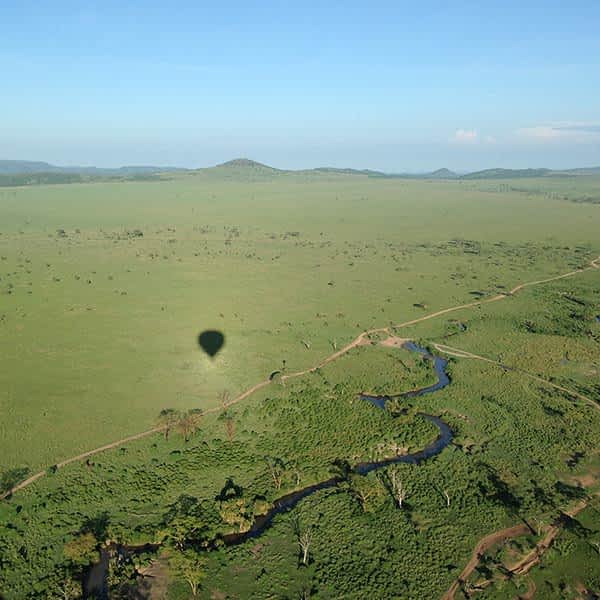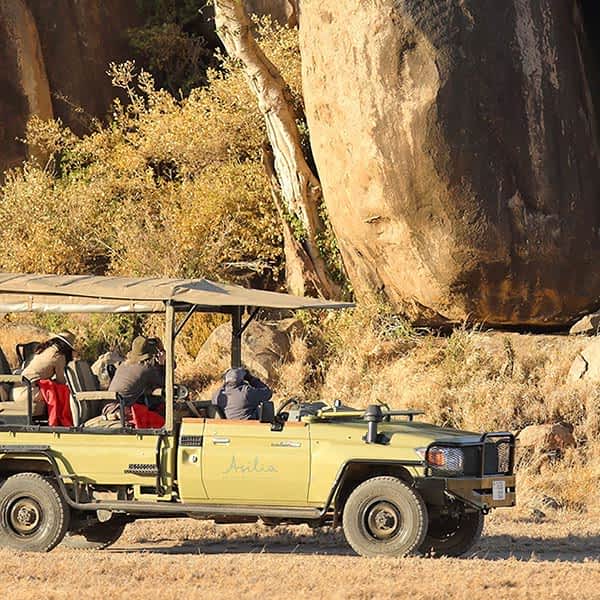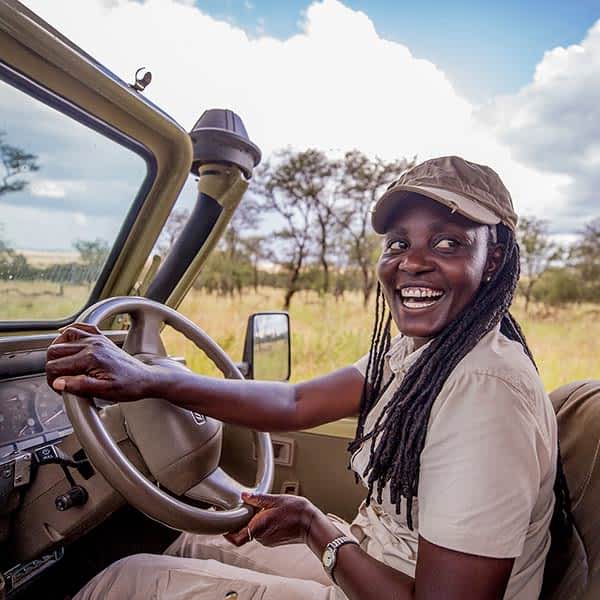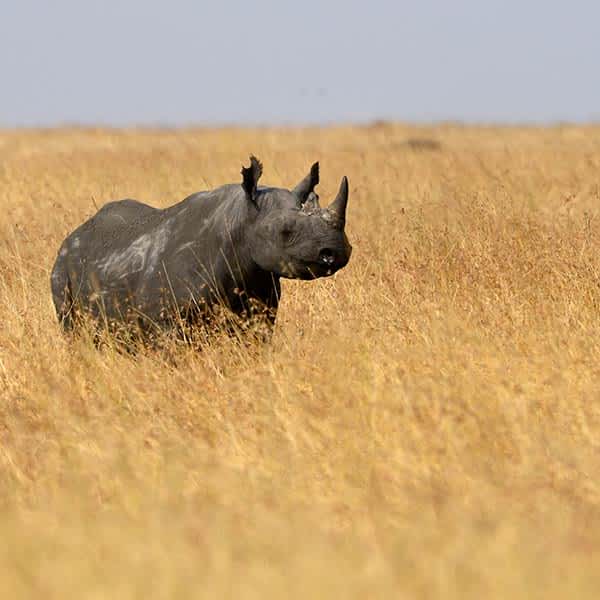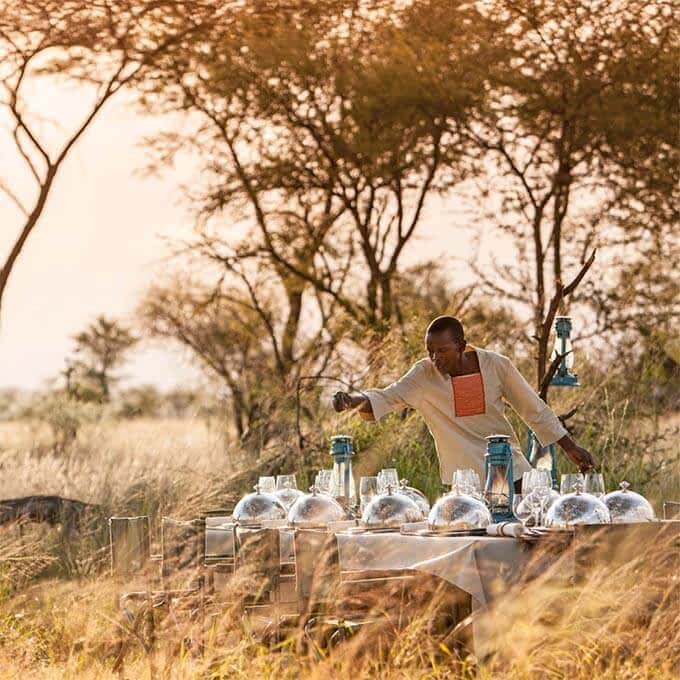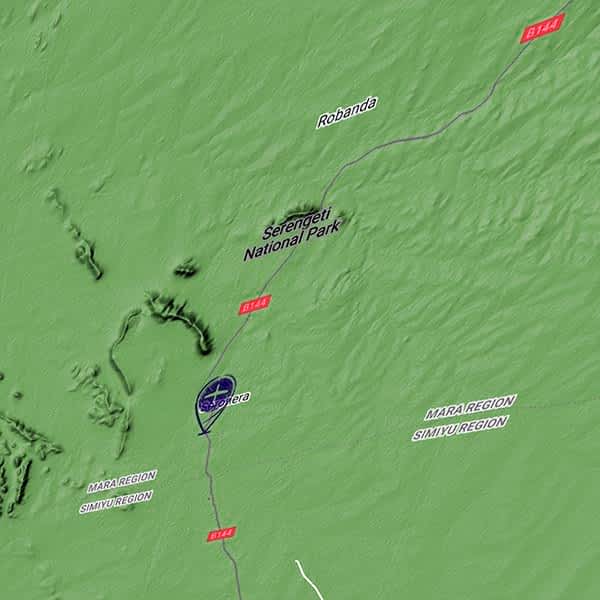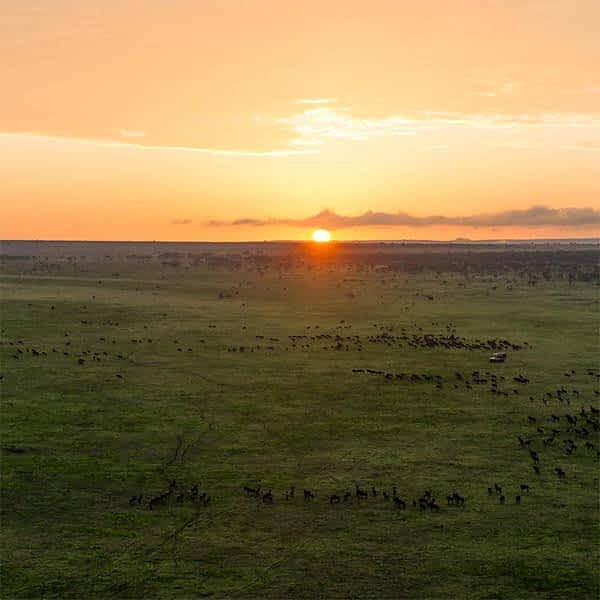About Seronera & southcentral Serengeti
A stay or visit to the Seronera area, in the very heart of Serengeti National Park, involves a bit of comprimise. The area southeast of Seronera becomes the center of wildlife viewing during the December-April rain season as vast herds of wildebeest congregate here in this period. Seronera is also known as predator capital of the world, sightings of leopard, cheetah and lion is (almost) guaranteed. The peak of wildlife and visitor activity is between March and May, the period in which the wildebeest and their entourage are found in the area. It also is a pleasant area to be as it offers a variety of different habitats and water is available year round. The upsides, abundant wildlife, great accessibility and many facilities, come with a price. It is important to realize that parts of this area experience very high visitor traffic. The area may attract a serious clustering of safari vehicles, especially when it concerns big cat sightings. In unfortunate circumstances you may see a single lion, whilst being joined by a pack of 20 safari vehicles. However, it is still very well possible to enjoy the Seronera area (and you should!): why not try to avoid the crowds or select more remotely located accommodation.
Wildlife viewing near Seronera
Most safari game drives concentrate along the Seronera River and with excellent reason: lion sightings are common and the riverbank is home to one of the world's densest population of leopards. The sausage trees and umbrella thorns rank among the best places in Africa to search for leopards - there are too few tall trees for these elusive creatures to be well-hidden. Several lion prides in the area have also taken to the trees regularly in recent years, particularly during the rains. A very special sight!
The kopjes near Seronera also offer lion sightings regularly. Especially the Moru Koppies provide very good lion and cheetah sightings. The area also accommodates around 25 black rhinos, offspring of a herd of seven that migrated across from Ngorongoro. The vast plains south of the Seronera River, often known as the Serengeti Plains, are good for cheetahs sightings. Ecologically, the plains running immediately southeast from Seronera form a continuum with the Ndutu and Ngorongoro Crater Area, comprising open grassland dotted with several clusters of koppies. The plains rising towards the Kamuyo Hills west of the Seronera River are good for spotted hyena, , cheetah and elephants.
Fed by the Mbalageti River immediately northeast of Moru Koppies, the small, saline Lake Magadi (a common name for lakes, as 'magadi' just means soda or salt) often supports large numbers of aquatic birds, including thousands of flamingos when the water level is suitable. The Retima Hippo Pool is home to up to 100 hippo’s, which can be seen basking near the confluence of the Seronera and Grumeti rivers about 15 kilometers north of the park headquarters.
Accommodation Seronera & southcentral Serengeti
The Serengeti Central area offers an extremely wide range of accommodation options. Although a lot of the properties are larger and more commercial, there are also some lovely and relatively remote tented camps, notably on the main plains to the southeast.
Further reading

